Graduating Artists Debut Thesis Exhibition at AU Museum
The graduating Studio Art MFA cohort presents the exhibition end quote, on view at the American University Museum at the Katzen Arts Center through May 21. Plan your visit Wednesdays through Sundays, 11 a.m. to 4 p.m.
end quote punctuates the end of the eight artists’ time together in DC. Having met in the aftermath of COVID-19, their introduction offered an exciting opportunity to reconnect with the arts community, exchange ideas about the contemporary world, and grow their artistic practice. While end quote may imply conclusion, it also signals the beginning of new chapters of creation and collaboration. The artists use diverse media to explore several themes, including community, self, nature, and desire.
Learn more about the Studio Art MFA program at American University.
Brianne Anderson
Instagram: @brianne_a

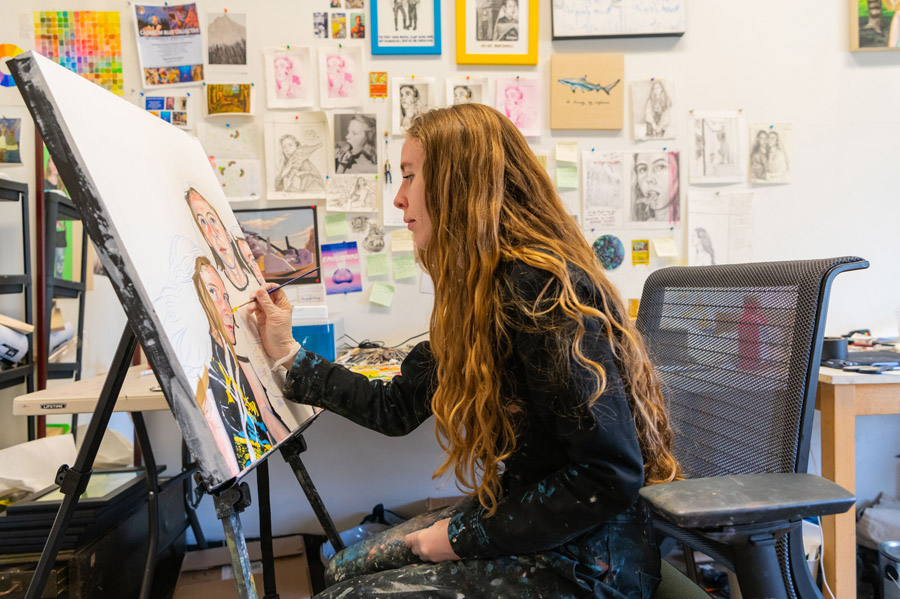
Most of my art practice consists of self-portraiture. There is an element of self-obsession, I think, in repetitive self-portraiture, but in this work I have decided to embrace that—I am using imagery of myself and things from my life, translated through surrealism and fiction, to playfully explore themes of introversion, self-obsession, vulnerability, and loneliness. The paintings are in an enclosed room, creating an environment of seclusion. In these works I am thinking about how I interact with the world, whether that be in relationships, with myself, or simply as a physical being.
Jarrett Arnold
Jarrett's website
Instagram: @jarrett.arnold
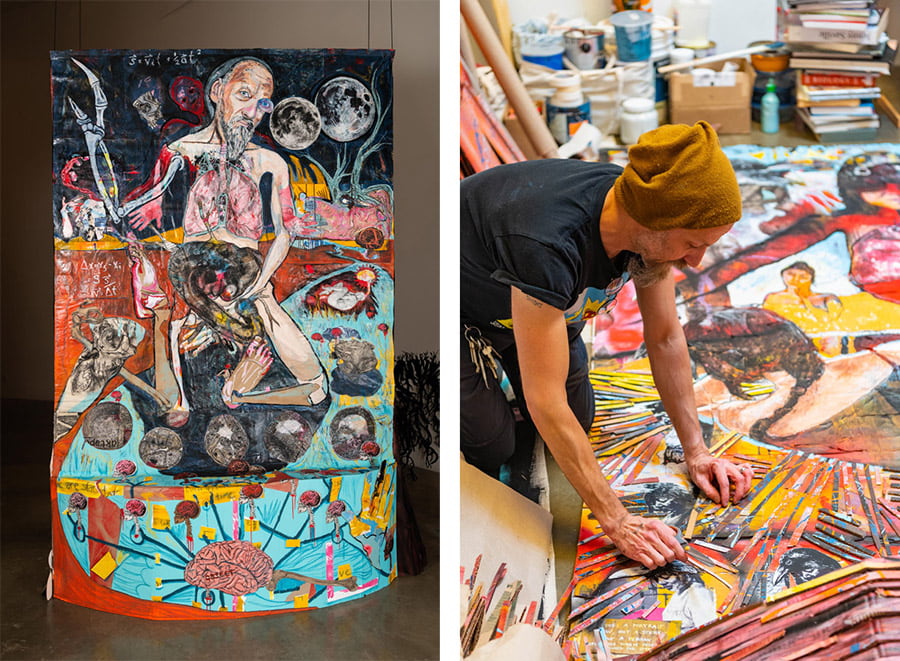
The work in this show is the result of 30 years of making art. There is no separation between my life and my art. I started making art seriously in 1992 when I completed the first sketchbook. In 2021, I left a career as a science teacher, I turned 47, reaching the age my father never reached, my youngest child started college, and I began the MFA thesis work exhibited here. At the end of this exhibit, my wife and I will celebrate 20 years of marriage together.
My process involves finding materials in my environment and using those to build images and non-objective fields of color and line. I work from photos I take, and direct observation and I invite the detritus of life into the work; I mix these with whatever thoughts, feelings, or happy accidents occur to me during the construction of each piece. I let the outcome develop as the piece ages, coming back to each piece periodically as new materials or thoughts come my way (pilgrimage). Each piece develops in the same way that a living organism develops during its lifetime. My art is alive (journey).
Naomi Le
Naomi's website
Instagram: @NaomiLeart
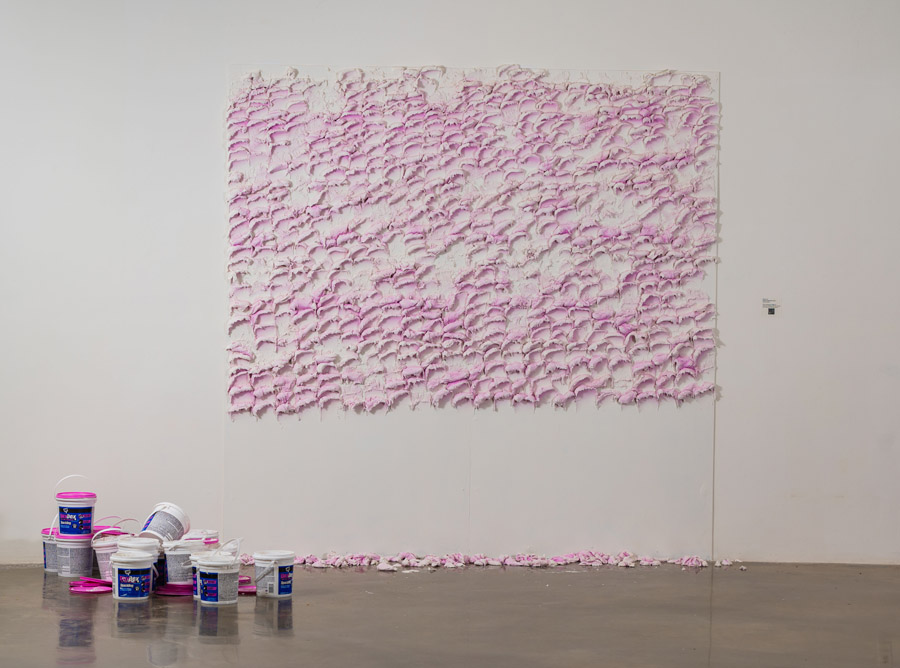
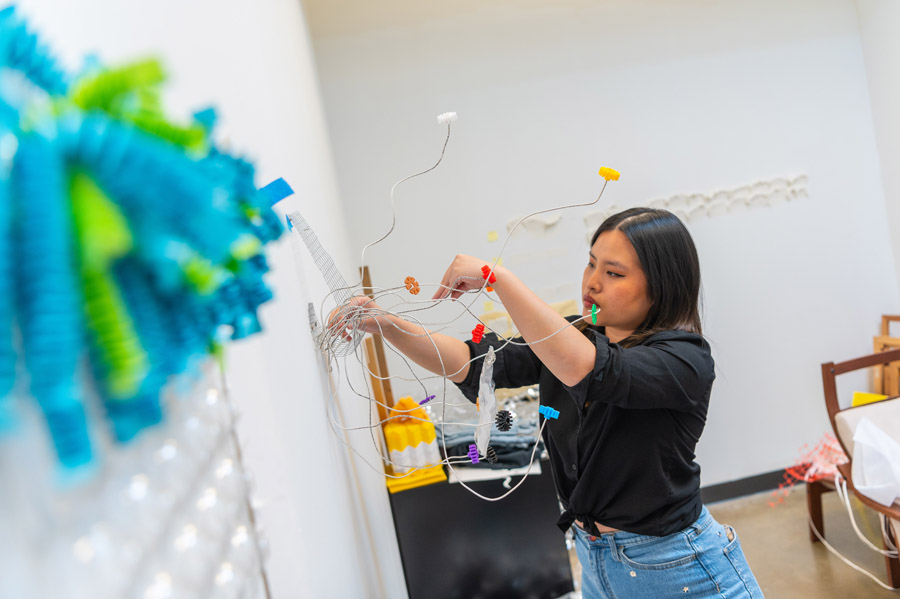
My work shows the inherent potential of materials we often view as mundane. I use unconventional materials that are store-bought or found, including styrofoam, vacuum bags, and sponges. My investigations are rooted in the idea of exploring and transforming the use of everyday objects into something that is examined as art to provoke us to question our ability to observe the real world.
In my process, I start with exploring a potential material such as multi-use copy paper by listing out the potential transformations: folding into three-dimensional shapes, cutting or tearing to get texture, or layering adhesive spray to give weight and texture. After successfully creating a satisfying transformation, I start producing the same piece numerous times to create the repetition element in my art practice.
The imagery in my work is mostly inspired by nature, animal migration, dry vines on a wall, or flowers. I want to trigger viewers to think about a moment that they witnessed or interacted with in nature. Lastly, by attaching them all or letting them present individually together, the final vision for the piece always in some way mimics nature. For instance, sponges could be crawling on the wall like how ants follow each other. Or folded papers could be attached to each other using paper clips to create a natural scenery.
My whole life in Vietnam, I saw rice fields every day. I see my work as a full field of vision – a full field of rice. Creating the idea and building installation work reminds me of childhood, an image of home.
Martina Loncar
Martina's website
Instagram: @tinistudios
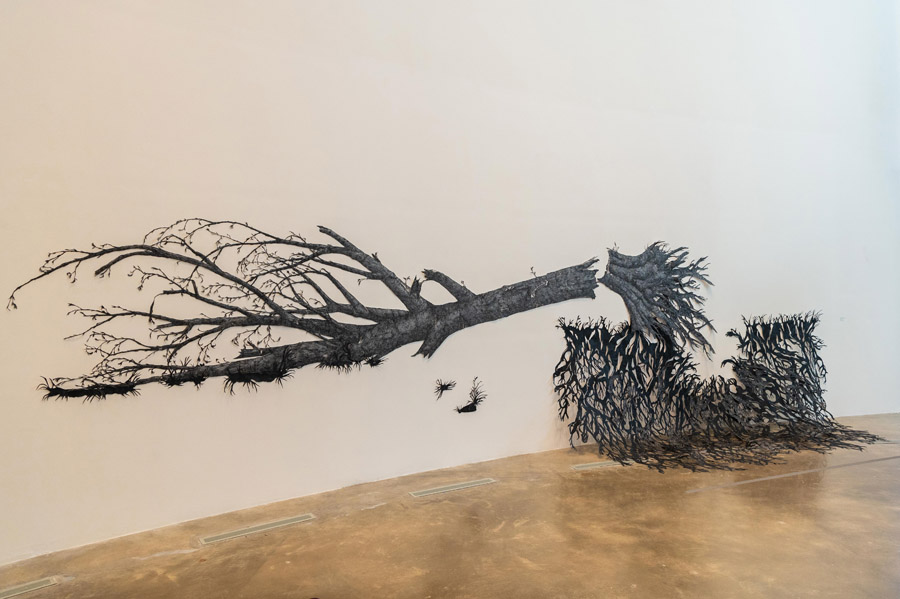
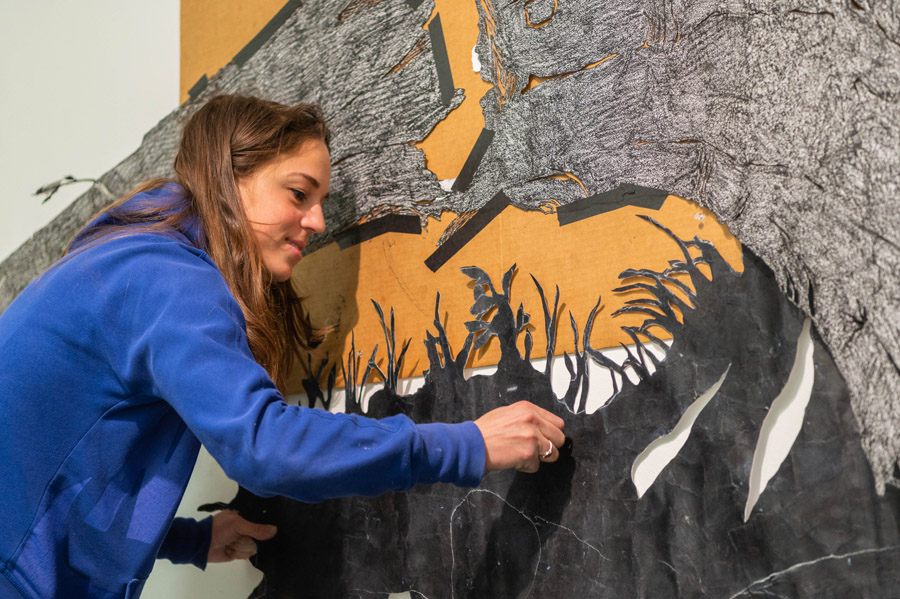
Through a laborious process of cutting, tearing, and repairing paper, I explore how trees and humans are connected to their environments through deep-rooted networks of care. I am fascinated by trees due to their tendency to live in communities and their ability to support one another through their root systems. Generally, I believe that the interdependency of roots can serve as a model for how humans may treat each other through suffering and hardship, but here I pose the question, “What happens when someone or something is uprooted from their community?" It all came down with a crash is dedicated to my friend, Charlie Vallee.
Taylor Scantling
Instagram: @itstaystudios

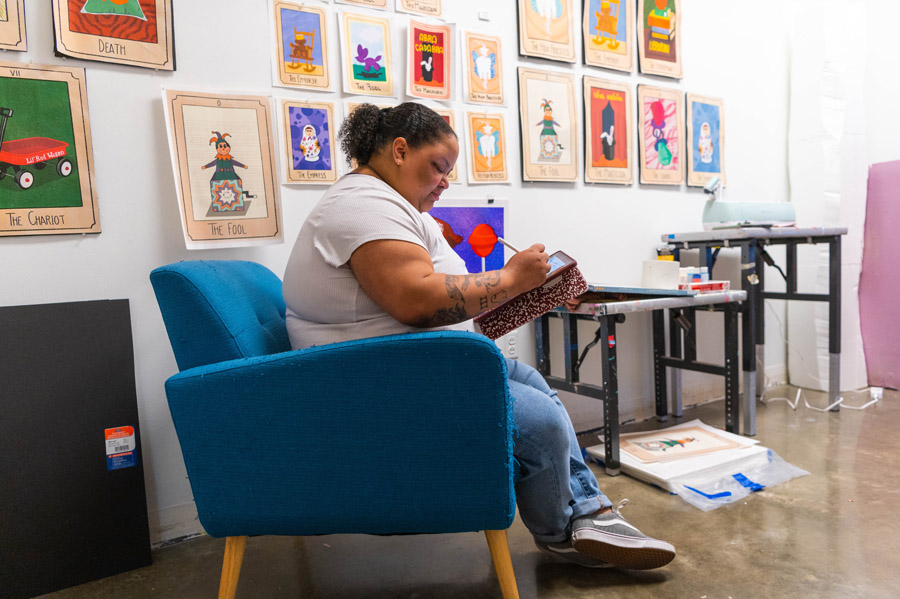
My artwork takes a critical look at society from the lenses of anti-racism, intersectionality, memory, and emotions. Nostalgia is also used to create layers of history in my work, flashing back to my childhood and my first experiences with racism. In the present time, it is my wish to go back to a time before people reminded me that I was different from them because of the color of my skin. My work features imagery that is simplistic and emblematic with images being used to convey messages and meaning between the ever-growing use and acceptance of digital art in the professional art world. I arrange them with a sentimental, more eccentric style that shows a striking difference between the content–because while the design is easy to digest, the message it criticizes is harsh and often uncomfortable. While the content that I discuss each time varies, the commitment to saying what needs to be said with blunt authenticity remains the same.
The decision of what image to create from beginning to end, what I need to say, and how it partners with that image is of utmost importance in my process. These decisions help me decide how they function: whether it is interactive or changes in scale. I am focused on creating work that speaks to the lived experience of being Black particularly in the United States and in spaces that are mostly occupied by white society. It is more than just a portrayal of frustrations, but a love letter to my community and the promise to force people to do the work necessary to end all forms of discrimination.
Josh Evans Tetzlaff
Instagram: @Josh_Evans_Tetzlaff
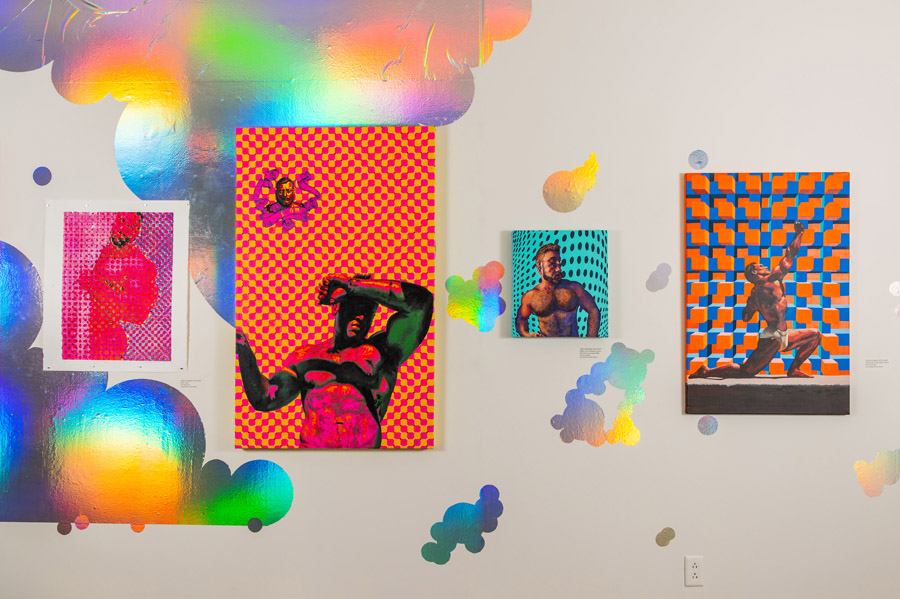
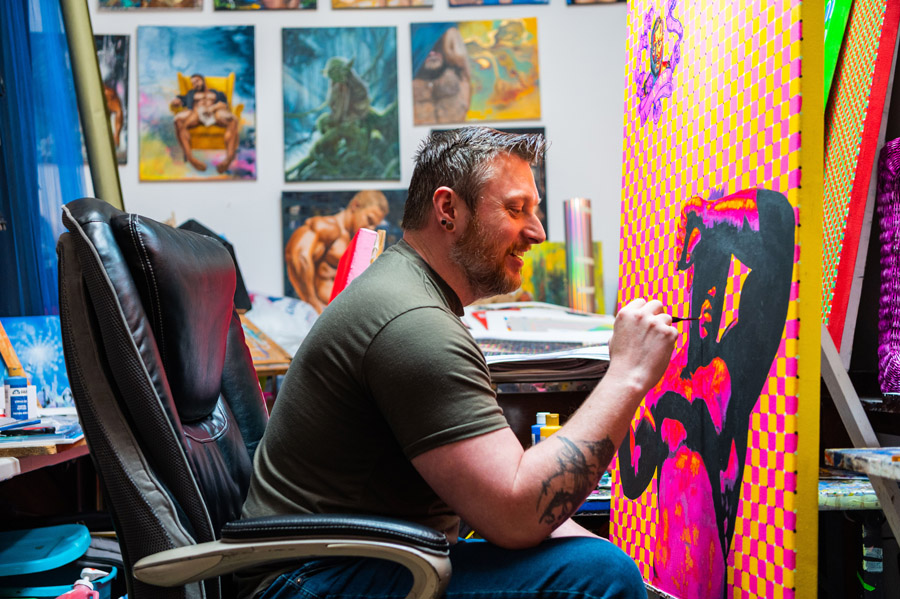
My art engages with the gay gaze; in conversation with the heteronormative fear of being “turned” gay. My practice has two lines of inquiry: queer espionage, which allows queer imagery to be seen without someone knowing they are looking at something queer, and optical illusions for what happens between the eye and the brain, allowing the viewer to activate the image with a mental paradox. I am utilizing queer espionage to hide gay themes in plain sight so that hetero-normative society doesn’t know they are observing something queer. So, I am balancing knowing and not knowing what an image is.
Yulu Wen

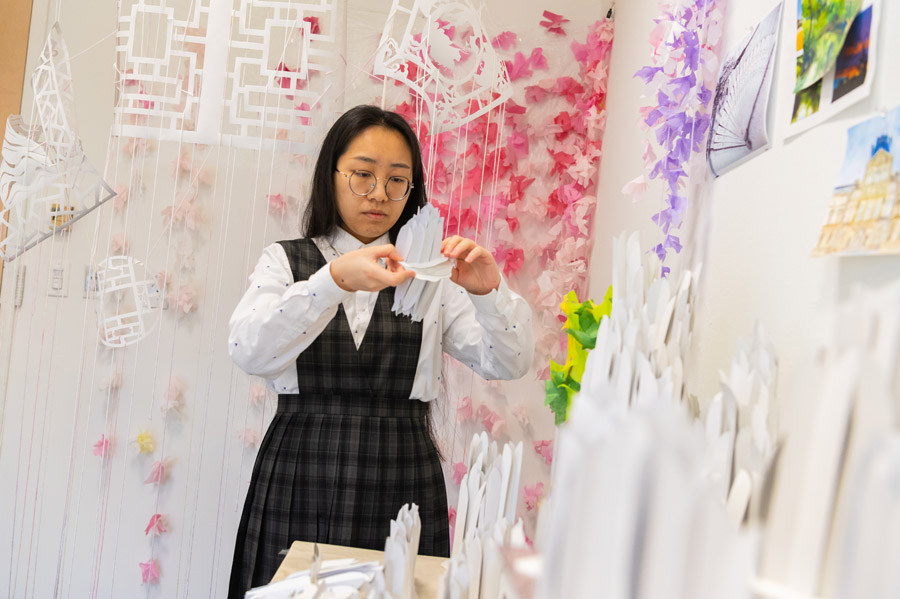
My artwork is attracted and inspired by natural landscapes, and I express my awe and love for nature through multiple mediums and forms.
For my watercolor paintings, I draw inspiration from traditional Chinese landscape paintings and Western watercolors. I use the continuous extension of the paper to create a sense of continuity and flow in my painting, allowing viewers to immerse themselves in the landscape, and feel the breath and changes of nature. I pay attention to the changes in light, shadow, and color in my paintings, as well as the free and more casual creative of western watercolors. My works convey the changing moods and impressions of nature, such as the tranquility of the countryside and the vastness of the mountains and rivers.
For my paper sculptures, I explore the transformation of paper from two-dimensional to three-dimensional, showing the details and textures of natural elements through structure and light. The natural forms and textures inspire my creativity.
All my works create a sense of wonder and contemplation, conveying the beauty of nature and the fusion of culture.
Jiazi Yin
Jiazi's website
Instagram: @jiazi_art

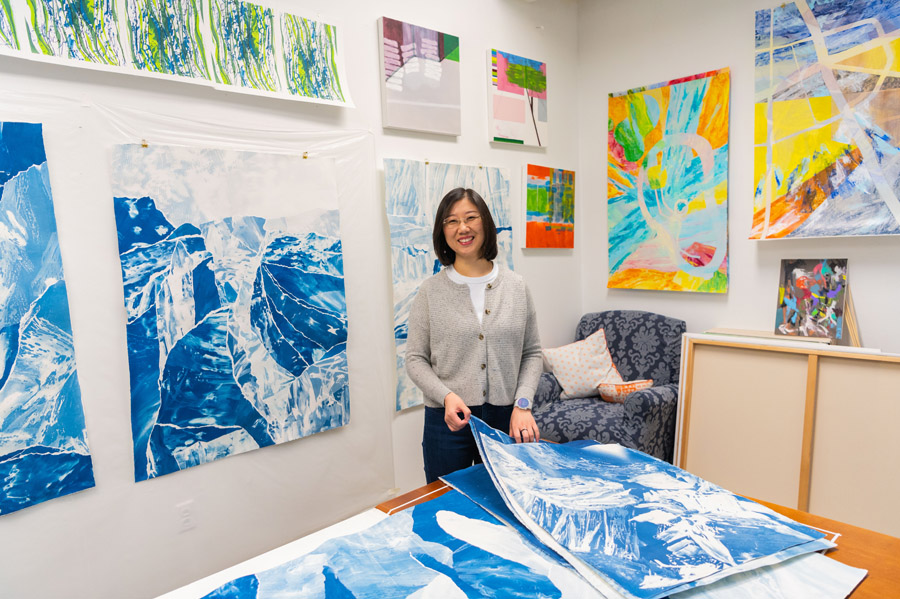
My work is based on my understanding of memory, time and space, and interpersonal relationships. The subject matter varies from human figures to abstractions. Through my figurative work, I explore the relationships and emotions in family life, which are universal and eternal but complicated. I also depict the life of my Asian immigrant friends because we have shared experiences. My abstractions focus on retrospection, analyzing my perception of the passage of time, and the transformation of space. I use color to express memories and emotions. As an immigrant, maps signify relocation and memory. I include abstract maps in my work so I won't get lost.
In this body of work, titled "Peaks and Valleys," I weave the collective experience of immigrants into the work by combining the natural scenery of the United States and China. I choose a photographic material, cyanotype, as the medium to deliver the ephemerality and nothingness of memory and the variability of life. While culture, everyday life, and the people around us shape our thinking constantly, landscapes play an indiscernible but important role in this process. It is not just a magnificent natural sublime, a lot of times landscape permeates our thinking with its affiliated political and cultural implications. I attempt to understand and convey those meanings and find my own place between the two types of landscapes and cultures.
